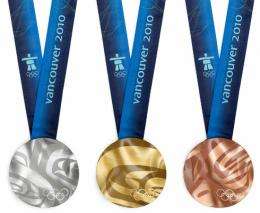An Olympic Forecast

The Vancouver Winter Olympics will not only challenge world-class athletes, but also a team of almost 100 meteorologists and atmospheric scientists tasked to provide the weather forecasts that keep the events safe and fair as well.
And just like the athletes, these forecasters have spent years getting ready for the games.
"We have been preparing for this since 2004," said Al Wallace, the regional director of weather and environmental operations with Environment Canada's Meteorological Service of Canada. The CMS is responsible for providing the weather forecasts during the games.
Each venue and event will need its own hourly forecast throughout the duration of the games. To meet this demand, the team of scientists had to find a way to measure snow, wind, visibility, and temperature more often and over a wider area.
"The Sea-to-Sky Highway (Highway 99) between Vancouver and Whistler Mountain is also well known for dramatic weather changes," said Wallace.
"What people need to realize is that the standard way to measure snowfall is basically a bucket with a shield around it, and someone goes out every 24 hours and measures it," said Paul Joe, a research scientist with Environment Canada. "For the Olympic Games, we wanted snow measurements every hour, and it's impossible to have a person do that."
The installation of additional automatic weather observing stations helped the scientists get more weather data without having to sacrifice people power. "This helps us fill in the gaps and make better predictions," said Wallace.
The games also gave the team of scientists an opportunity to forecast in new areas of Canada.
"We had never made weather forecasts in the Callahan Valley (the site of the Whistler Olympic Park where the biathlon, cross-country, Nordic combined, and ski jumping events are scheduled) before, and we never made forecasts at Whistler Mountain with that level of detail," said Joe.
Weather can provide an advantage or disadvantage to competitors. Conditions can change in an instant, from one athlete competing to the next, which is why detailed forecasts are important to event officials who can reschedule the events to make sure that weather is not a major factor in which athletes take home the gold.
"For example, the ski jump is very sensitive to changes in wind speed," said Wallace. "It can become unsafe for athletes or if the wind shifts, it could be an unfair advantage."
The team of scientists stated in that part of their federal mandate for the games is to provide weather warning services to support the safety of the athletes, officials and spectators and to ensure the fairness of the sporting events in an article published in the Bulletin of the American Meteorological Society.
No matter who takes home gold, the team of scientists are excited to part of this event and hope that some of the weather instruments testing during this year's games could become part of mainstream use for weather forecasts in the future.
"It's an exciting time. We are doing something for our country and advancing the science," said Wallace. "We have already begun working with the team for Russia in preparation for the 2014 games."
(c) 2010 Inside Science News Service















